Existential questions in a prize-winning research poster
12 March 2025
EPCC PhD student Felicity Anderson writes about attending deRSE25 in Karlsruhe, Germany, last month where she was awarded the prize for the best poster.
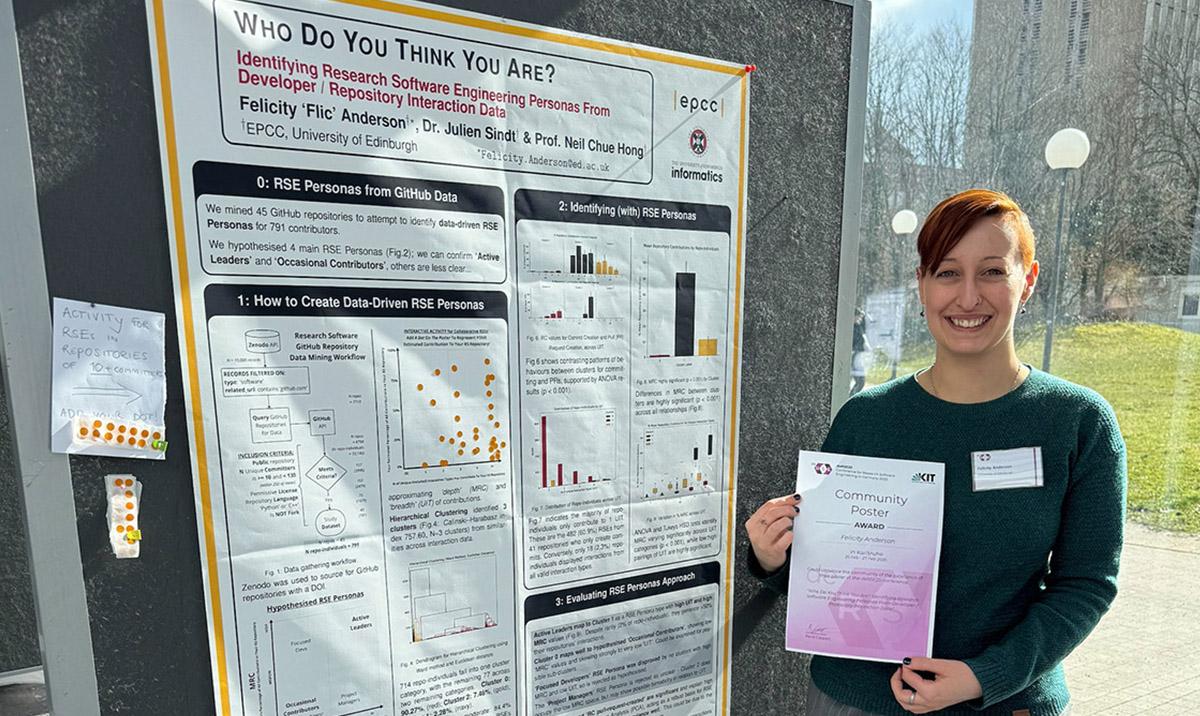
Above: Felicity with her prize-winning poster.
As someone who has been academia-adjacent for over ten years now, I’ve been lucky enough to attend a few conferences around Europe. It’s always wonderful to get the chance to travel to meet a group of people with the same interests, learn new ideas and share experiences. As a result, I was delighted to have a poster abstract submission accepted for deRSE25, the Fifth Conference for Research Software Engineering, held in Germany in February. Despite my track record of attending conferences, this was my first in-person conference poster (except for last year’s EPCC PhD Research Showcase, which was aimed at EPCC staff and students).
Given the research software engineering focus of the conference, it was an ideal venue to present the emerging results of my work: “Who Do You Think You Are? Identifying Research Software Engineering Personas From Developer / Repository Interaction Data” – a novel application of the data-driven Personas design approach from Software Engineering (SE) to Research Software repositories on GitHub.
Personas are named descriptions created to summarise groups of people within a dataset who show similar behaviour or goals. They help developers and product managers think about important user-groups' requirements and ensure that features of a product will meet their needs.
My PhD project work currently focuses on how well the Personas method can be adapted to the field of Research Software Engineering (RSE), by looking at whether we can group research software developers and contributors to research software projects by analysing common patterns in how people interact with their repositories on GitHub.
“Who Do You Think You Are?”, the rather existential question in the title of my poster, prompts RSEs to think about their own contributions and the links with my findings so far.
The conference itself was based in Karlsrühe in south-western Germany at the campus of Karlsruher Institut für Technologie (KIT), a centre of excellence in research in technology and the physical sciences. It hosted an amazing three-day programme of inspiring and interesting talks, workshops, tutorials, birds of a feather sessions, and demos as well as the poster session.
The RSE conference was co-located with the annual German SE conference, to encourage overlap between the two fields and build stronger ties between more traditional software engineering and research software engineering. The Birds of a Feather sessions especially fulfilled this goal, with engaging participatory sessions which aimed to break down myths from each field, discuss challenges for the future, and bring together participants from each background.
The poster session took place on the second day of the conference, during an evening reception. The joint conference welcomed nearly 500 participants across both deRSE and SE conferences, and the hall was buzzing with excited chat as people networked, caught up with colleagues, and browsed the posters on display.
Luckily I had made time to view some of the other posters earlier in the day, as I ended up spending a foot-aching 4.5 hours standing next to my poster discussing my research with attendees. I was extremely surprised by how engaged people were with my research and the ideas behind it (even after a long day packed full of informative talks), and I’ve taken away lots of brilliant suggestions for things to follow up or ways my research could be used after publication.
Perhaps part of the reason my poster was so engaging was that it included an interactive activity: getting people to stick a dot on to a plot to represent their contributions to research software repositories they worked on. This acted as an excellent icebreaker and helped people understand my original hypotheses about which RSE Personas I had expected to find, drawing them in to my research.
The process of narrowing down months' worth of work to a coherent narrative that fits an A0 poster and can catch people’s attention in a crowded conference environment is fairly tricky, and my supervisors Neil Chue Hong and Julien Sindt were extremely helpful in their advice on how to tackle the process – clearly their advice worked, as I was lucky enough to beat 44 other presented posters to win the conference poster prize!
After getting back home from Germany, I only had a few days to rest on my laurels before the conveniently timed second EPCC PhD Research Showcase (5th March 2025), where I got to present the same poster to my department colleagues, and add some more dots to my poster!
I have been invited to give a talk about the work detailed in my poster at the HiRSE seminar series focusing on Research Software Engineering amongst the 18 research centres that form part of the Helmholtz Association – an excellent outcome and a really exciting opportunity to present my research as it comes together, particularly as I begin to think about publishing this element of my project.
Overall, I’d consider this a very successful conference – I've made great contacts doing similar work elsewhere, some new friends, gained a lot of new ideas, and had a great confidence boost from the amount of interest in my research; all benefits which will support me through the next few months of work to get this chapter of my PhD project completed!
Poster DOI: https://doi.org/10.5281/zenodo.14988656
Author
Felicity (Flic) Anderson
Follow Felicity's work
GitHub https://github.com/FlicAnderson
LinkedIn: https://www.linkedin.com/in/flicanderson
ORCID ID: https://orcid.org/0000-0001-8778-6779
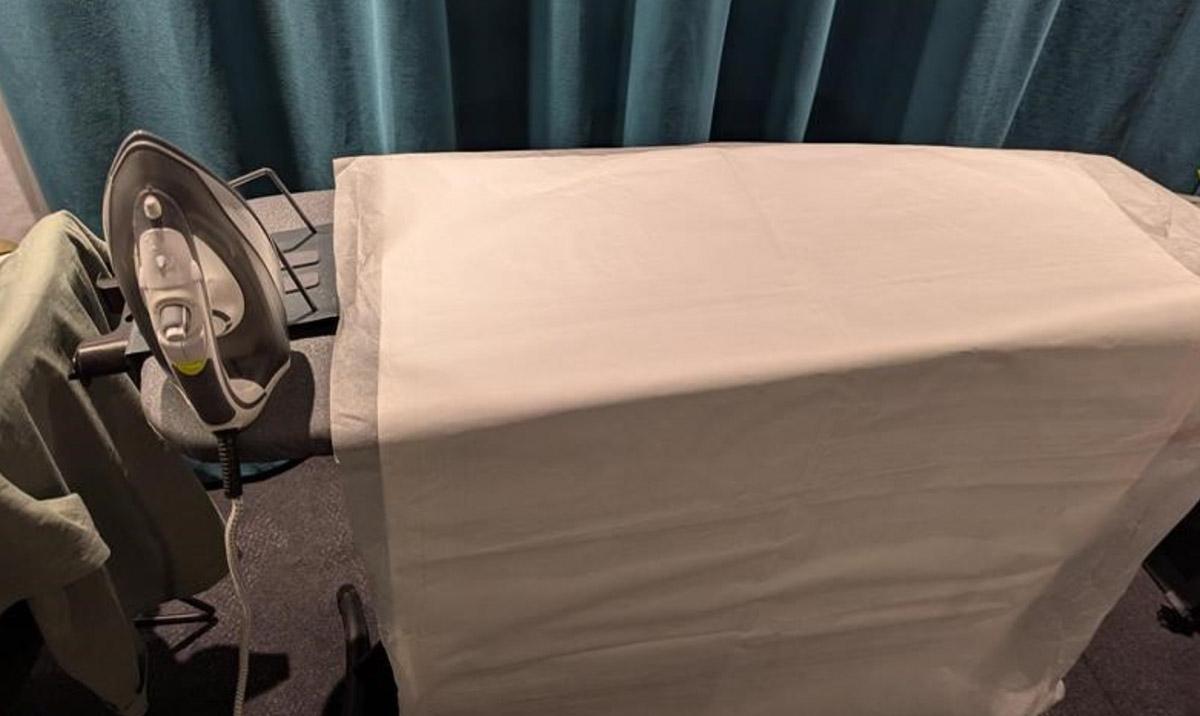
Travel canvas posters are amazing. Upside: they fold well and pack into your hand luggage. Downside: your research might not fit on the ironing board when getting rid of creases before presenting!
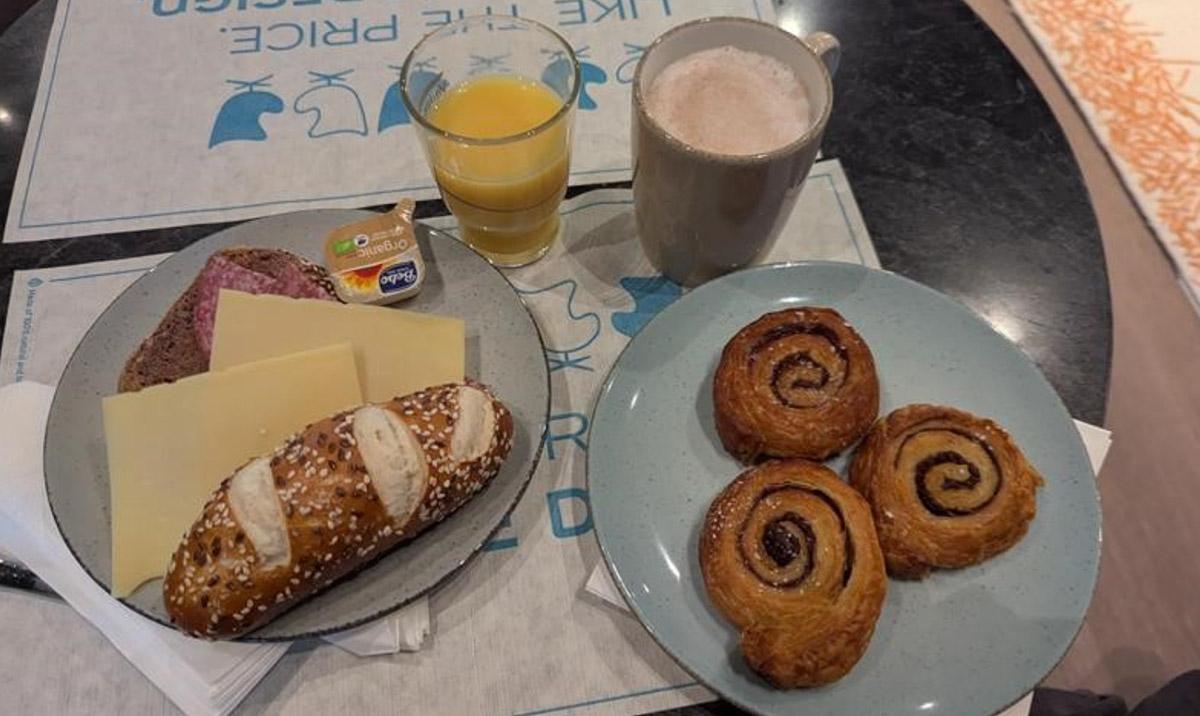
The best continental breakfasts are found on the Continent.
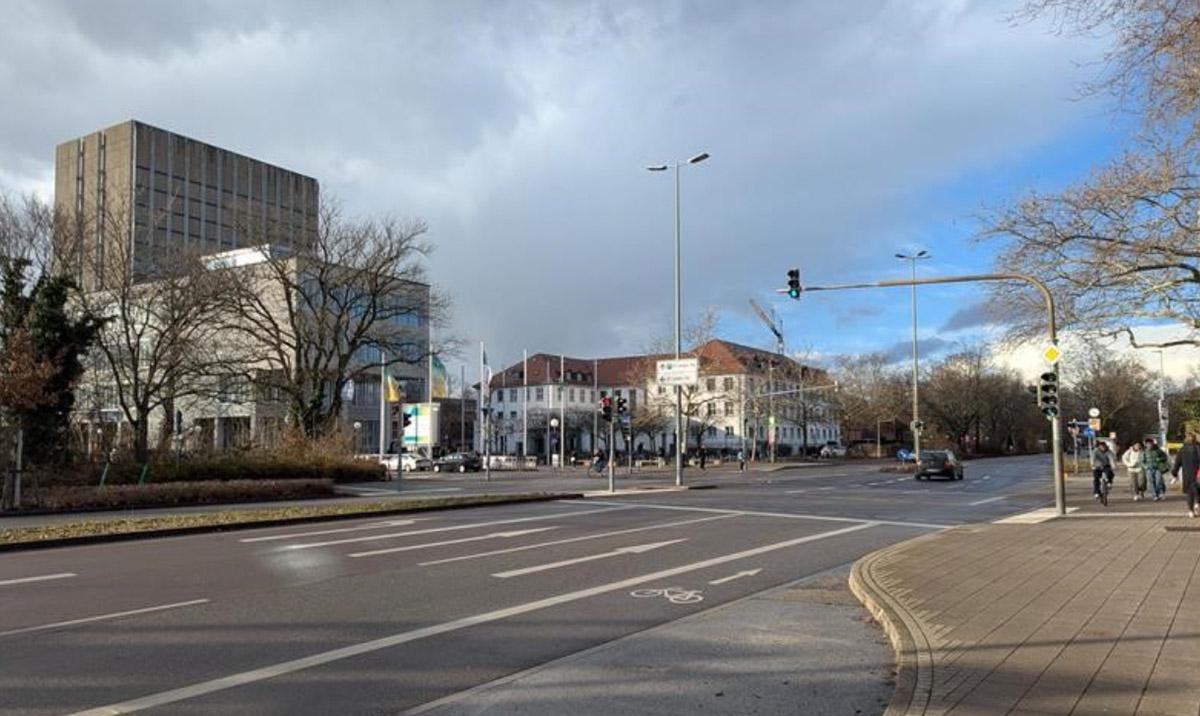
View of KIT Campus South.
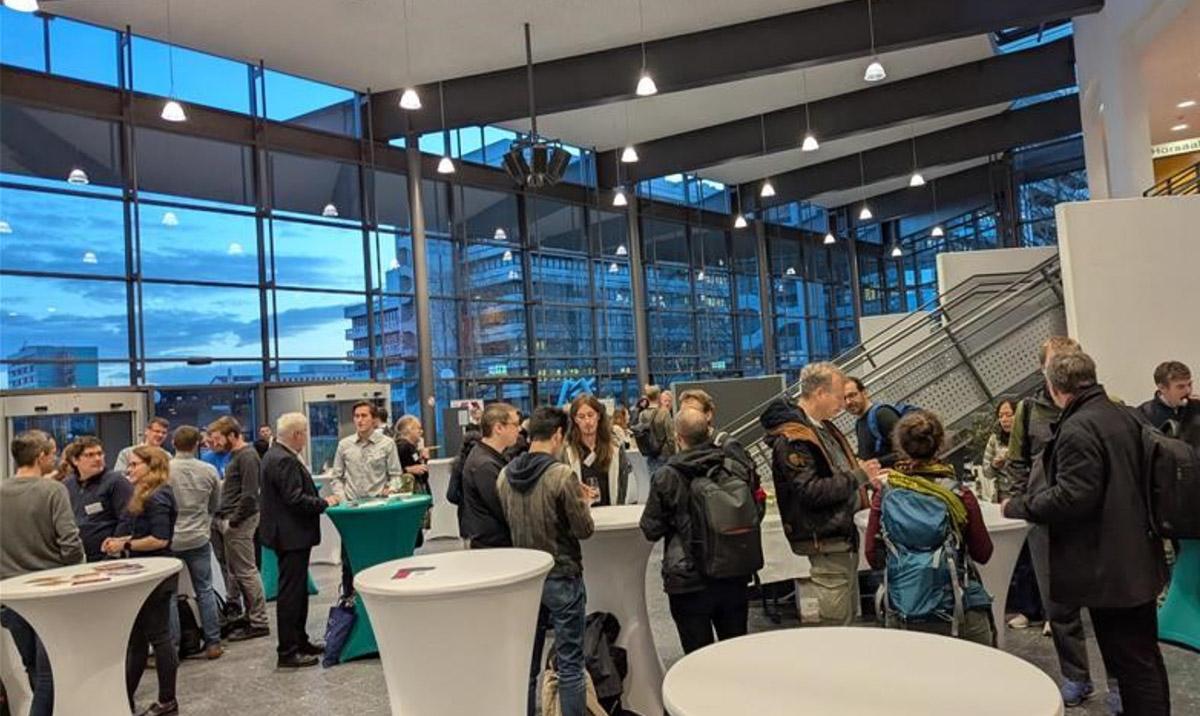
Inside the venue.
